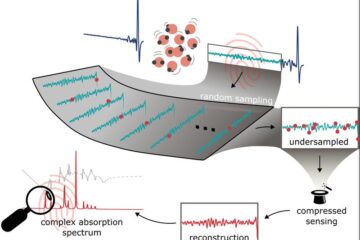Scientists Discover Soy Component May be Key to Fighting Colon Cancer

The study, led by Julie Saba, MD, PhD, senior scientist and director of the Cancer Center at Children’s Hospital Oakland Research Institute (CHORI), will be featured in the December 15, 2009 issue of Cancer Research. Soy has long been touted as protective against colon cancer, but Dr. Saba’s team made the groundbreaking discovery that SDs naturally found in soy may underlie the benefits of soy products.
Dr. Saba and her team first identified SDs in the fruit fly, an organism that is sometimes used to study the genetics of human diseases. Further investigation indicated that elevated SDs actually induced the death of mutant cells in the fly, revealing SDs to be cytotoxic compounds (toxic to cells). Preventative colon cancer strategies often focus on cell death—a normal process the body uses to remove unhealthy or mutant cells, like cancer cells. Coupling this discovery with the finding that soy is a rich source of SDs, researchers made an innovative connection.
“It’s very exciting,” said Dr. Saba. “First, we are encouraged to find a natural molecule that could be consumed through soy products as a strategy to help prevent colon cancer. Second, this information is important because we can build on our understanding of the structure and metabolism of SDs in terms of developing new drugs to treat people who already have colon cancer. Uncovering how SDs exert their effects also helps us to find the most likely combinations of drugs that may work synergistically to eliminate cancer cells and mutant cells that could give rise to cancer.”
Future research is needed to identify the best way to deliver SDs and to confirm the overall toxicity when the compounds are used for extended time periods and in combination with other agents. Dr. Saba, who has already received two grants to continue her research, also hopes to determine if SDs are effective in protection against other cancers.
Dr. Saba also acknowledges that future research is needed to determine if there are other components of soy that are beneficial in fighting colon cancer. In the meantime, Dr. Saba says, “I would be comfortable recommending soy products as a change in the diet that could protect against cancer. The more that soy is studied, the more of these protective agents are found, so it’s a very healthy diet choice.”
About Children’s Hospital & Research Center Oakland
Children’s Hospital & Research Center Oakland is Northern California’s only freestanding and independent children’s hospital. Children’s is a leader in many pediatric specialties including neonatology, cardiology, neurosurgery and intensive care. The hospital is a designated Level 1 pediatric trauma center and has the largest pediatric critical care facility in the region. Children’s Hospital has 190 licensed beds, 201 hospital-based physicians in 30 specialties, more than 2,600 employees and an annual operating budget of $312 million. Children’s research arm, Children’s Hospital Oakland Research Institute (CHORI), is internationally renowned for taking state-of-the-art basic and clinical research to the bedside with interventions for treating and preventing human disease. CHORI has 300 staffers, a budget of about $50 million, and is ranked among the nation’s top 10 research centers in National Institutes of Health funding to children’s hospital research programs. CHORI is a leader in translational research, developing new vaccines for infectious diseases, and discovering new treatment protocols for previously fatal or debilitating conditions including cancer, sickle cell anemia, thalassemia, diabetes, asthma, HIV/AIDS, pediatric obesity, nutritional deficiencies, birth defects, hemophilia and cystic fibrosis.
Media Contact
More Information:
http://www.childrenshospitaloakland.orgAll latest news from the category: Health and Medicine
This subject area encompasses research and studies in the field of human medicine.
Among the wide-ranging list of topics covered here are anesthesiology, anatomy, surgery, human genetics, hygiene and environmental medicine, internal medicine, neurology, pharmacology, physiology, urology and dental medicine.
Newest articles

Molecular Fingerprint Beyond the Nyquist Frequency
Ultrafast laser spectroscopy allows the ascertainment of dynamics over extremely short time scales, making it a very useful tool in many scientific and industrial applications. A major disadvantage is the…

High-energy-density aqueous battery based on halogen multi-electron transfer
Traditional non-aqueous lithium-ion batteries have a high energy density, but their safety is compromised due to the flammable organic electrolytes they utilize. Aqueous batteries use water as the solvent for…

First-ever combined heart pump and pig kidney transplant
…gives new hope to patient with terminal illness. Surgeons at NYU Langone Health performed the first-ever combined mechanical heart pump and gene-edited pig kidney transplant surgery in a 54-year-old woman…





















